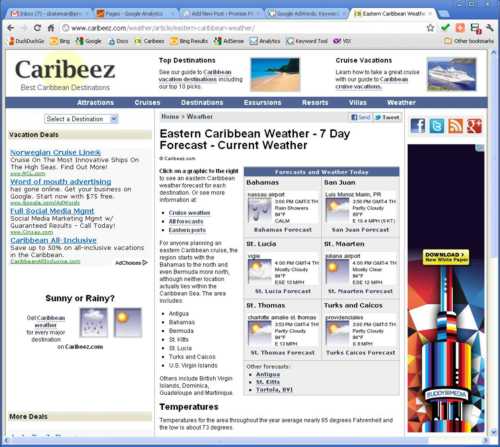How to Conquer Bounce Rate in Google Analytics

Bounce rate in Google Analytics measures the percentage of people who come to a page on a site and leave the site without clicking on another page.
It also is a measure FOR Google to judge the value of the page to the user. The lower the bounce rate, the more useful the page and the site.
The more useful the page and the site, the higher it should be ranked in Google. After all, Google wants people to find its search capability as a beneficial experience.
A high bounce rate may indicate a number of problems to Google and other search engines:
- The content is not relevant to the user’s search.
- The page has inappropriate content.
- Pages load too slowly.
- The page is packed with popups, too many ads, etc. It’s just plain ugly.
Google has no way of knowing why people come to a page and leave it for another site — or another search. It just knows that the searcher has a good reason to leave again.
As someone who uses search engines, I sure don’t want to get such a page in my top results.
Maybe They Leave for a Good Reason

The bounce rate on this page improved dramatically simply by moving up high-click links and moving down low-click links.
Sometimes a page has a high bounce rate for a good reason. For example, the searcher found the information he or she was seeking.
I have pages with high bounce rates no matter what I do with them.
But this particular category of content is very data specific. The content is a dynamic set of facts and figures.
Searchers come to the pages from Google because they have a specific purpose in mind and seek a small slice of information. They are not always looking for long text narratives (like this article).
There is a critical difference between the bounce rate for a site and the bounce rate for an individual page on that site.
Yes, the site bounce rate is the average for the rate of all pages on the site.
The site bounce rate will decline when efforts reduce the bounce rate of individual pages.
It will decline over time if the efforts focus on popular, high-volume pages. The bounce rate will not decline by much if the efforts focus on low-volume pages.
It is more important to focus on the bounce of individual pages because some pages simply won’t improve by much while others will improve a lot.
If a site has hundreds or thousands of pages, it’s a good use of time to focus on the most important pages.
How to Reduce Bounce Rate
Index pages should have a lower bounce rate than article pages in analytic reports. No question about it.
An index page is any page on the site that consists of numerous links to other pages on the site.
A simple way to improve bounce rate is by looking at the Next Page report for that page in Google Analytics.
- Go to Content / Site Content / All Pages.
- Click on a page to analyze.
- Near the top, click on Navigation Summary.
- Look on the right under Next Page Path.
The list will show which links on the page get clicked the most and which get clicked the least.
Let’s say you have a Caribbean travel guide and a page in that guide about “eastern Caribbean weather”.
It has an article plus a box with a group of links. The links stretch vertically from top to bottom.
The Google Analytics “Next Page Path” report shows that the Antigua link at the top of the page had a poor click rate while San Juan at the bottom of the page had a high rate.
Piece of cake. The two links are swapped. The bounce rate declines by 10 percentage points.
Within days, the page moves up three positions to No. 2 in Google.
The moral of the story is clear. Check the click rates on the page. Move links around to maximize the click rate. Decrease the bounce rate in Google Analytics.
Otherwise:
- Make the page load faster by slimming down images and scripts.
- Make advertising less intrusive.
- Check the title tag, meta description and headline to make sure they are relevant to the body of the article.

 Promise Media offers online business tips and best practices for content-rich websites.
Promise Media offers online business tips and best practices for content-rich websites.